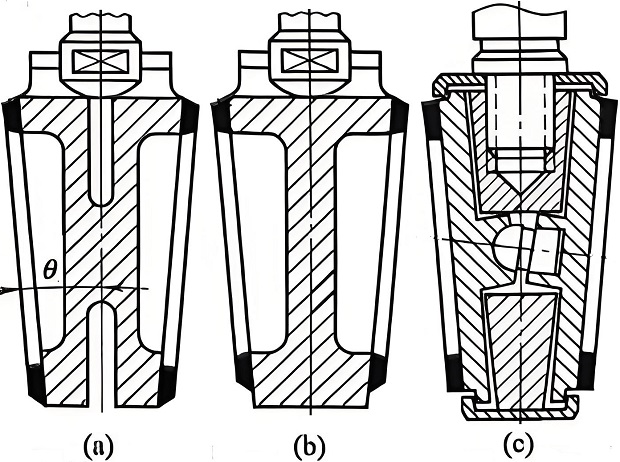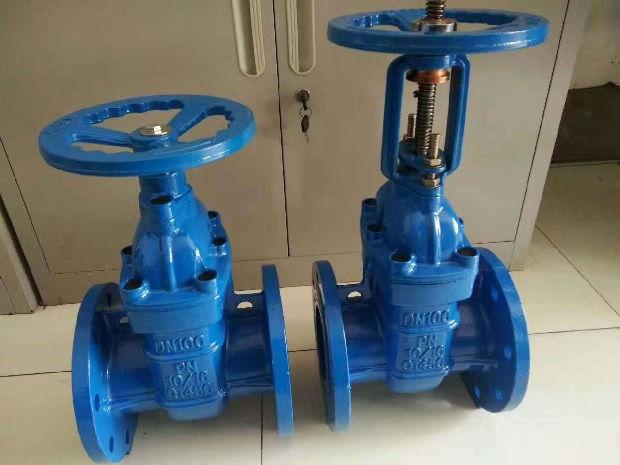Categories
- Tech & News (24)
- Pipes & Fittings (15)
- Valves & Pumps (62)
- Equipment & Tools (13)
- Facilities & Chemicals (13)
The cast iron metal seated gate valve is usually furnished with a wedge-shaped gate, which is perpendicular to the process flow. The wedge-shaped gate valve uses two inclined seats and a slightly mismatched inclined gate (also called “wedge”) that allows for tight shutoff, even against higher pressures. The inclined wedge are designed 2.5° to 5° from the vertical plane, while the inclined seats are designed with a close, but not exact angle. This inclination angle θ is called the “wedge half angle”. When the seat and wedge angles are slightly mismatched, either the seat or the wedge is designed with some free movement to allow the seating surfaces to conform with each other as the manual actuator force is applied.

The internal view of a non-rising stem (NRS) metal seated cast iron gate valve (left); The internal view of a rising stem (RS) metal seated cast iron gate valve (right).
The wedge of the cast iron metal seated gate valve is attached to the manual operator through the stem, which may be either fixed (rising stem) to the wedge or threaded (non-rising stem) to the wedge. As illustrated in the picture above, the stem is not integral to the wedge but rather uses a T-shaped collar that fits into a T-shaped slot in the wedge. The T-slot is usually parallel to the flow stream. A pair of copper alloy seat rings are embedded/ inserted into the seating areas of both the wedge and the valve body to form the metal-to-metal seal. This metal seated design offers enhanced durability, better resistance to higher temperatures and harsh environments, improved sealing performance, and longer service life compared to traditional soft-seated designs.

The drawing of three types of wedge design for cast iron metal seated gate valves. (a) flexible wedge; (b) solid wedge; (c) double disk (split wedge).
The wedge gate of commonly used cast iron metal-seated gate valves is divided into three types: solid wedge, flexible wedge, and double disk (split wedge).

Rising stem and non-rising stem metal-seated gate valves, made in accordance with DIN 3352 F4, supplied to Germany.
Cast iron metal seated wedge gate valves are generally furnished with flanged ends. They may be manufactured in accordance with a series of international standards: BS 5150, EN 1171, DIN 3352, BS 3464, MSS SP 70, BS 5163, GB/T 12232, JIS B2031, API 595, API 604, ASME B16.10, etc.